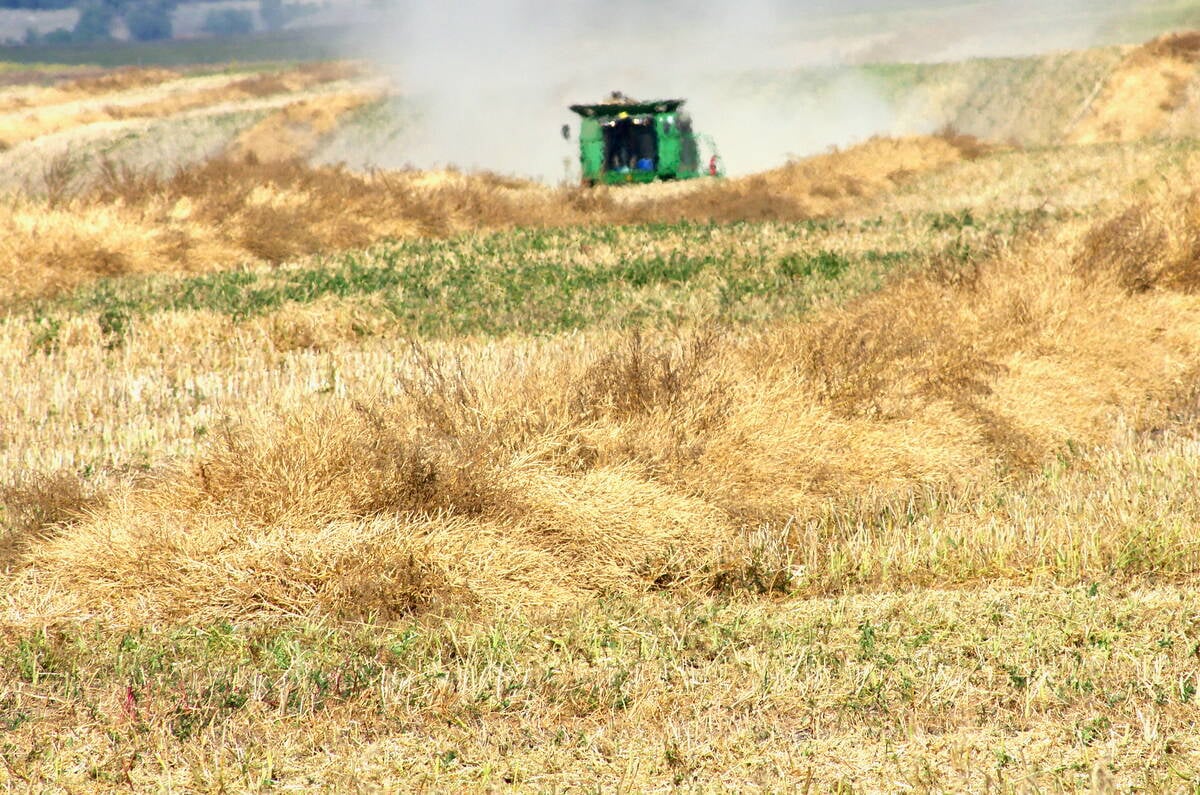EDMONTON – Rita and Milton Hennig have been showing their Shorthorn cattle at Farmfair International for 30 years, as long as the Edmonton livestock show has been around.
The Andrew, Alta., couple keeps returning because buyers see their cattle at the event.
“We’ve had good results from this show,” said Rita, 68, as she sat on a tack box while the rest of her family spread wood shavings, hung banners and got the alley ready for the cattle to be brought into the exhibition hall.
“If you don’t show, they forget about you.”
Read Also

Manitoba searches for Plan B on canola oil exports
A new report explores Manitoba’s current canola oil trade and possible alternative markets to the U.S.
The Hennig family started coming to Edmonton in 1948, 55 years ago, when the cattle show was held in the summer during the city’s Klondike Days.
Since the show was switched from a summer to a fall fair in 1974 in an effort to increase participation, the couple hasn’t missed a show.
Over the years the Hennigs have exported their Shorthorn cattle to Australia, Scotland and Western Canada, all because buyers had seen their animals at Farmfair.
“This was where the deals were made,” she said.
Leroy Emerson was manager of Farmfair International when the event was changed from summer to fall. He said the switch dramatically increased attendance of exhibitors and visitors.
For Emerson, the biggest change over the last 30 years has been the facilities. The cattle shows used to be held in the Sales Pavilion and the Edmonton Gardens, built years earlier.
Only half the barns were heated and exhibitors risked blowing an electrical circuit every time they plugged in a dryer. If an animal caught a horn on a hose in the wash area it would spring a leak and a plumber would have to be called.
“They were pretty primitive amenities,” said Emerson, who ran the show along with a secretary and a few others hired during the event
The decision was made to replace the buildings with the present day AgriCom, which is still one of the best facilities in Canada, he said.
In 1964 the first exotic cattle were brought to the fair. Charolais was the first breed to be exhibited and Emerson said nobody wanted to be stabled next to them when they first arrived. In 1974, the first year of Farmfair, the show expanded from the traditional Hereford, Angus and Shorthorn to include Charolais, Limousin, Maine Anjou and Simmental.
At the time, there was a full sheep, swine and dairy show. The sheep and swine shows have since been scaled back and the dairy show eliminated.
Leah Jones, the director on the Northlands board in charge of agriculture, said organizers are “pleasantly surprised” with the number of entrants this year. With the combination of drought and the bovine spongiform encephalopathy crisis, the organizing staff were worried entries would be reduced.
There are just under 1,400 cattle, down from 2,000 last year. The number of small animal breeds like goats, alpacas and llamas are about the same as last year.
Committee members phoned many of the previous exhibitors to encourage participation this year.
Pat Fuhr of Onoway, Alta., felt it was important to bring her Boer goats to the show despite hard times in the industry.
“I think it’s really important to get here and make an appearance no matter if the border is closed.”
Daryl Krause of Spruce Grove, Alta., chair of the alpaca show, said the border closure has dampened the enthusiasm of the alpaca industry, but breeders from across the four western provinces have come to the event.
“We’re pretty tickled with our turnout.”
Farmfair International runs from Nov. 1-9 in Edmonton. The Western Producer will have more coverage in upcoming issues.














